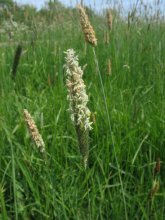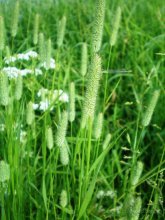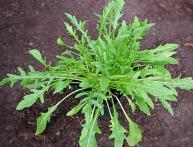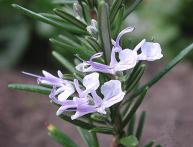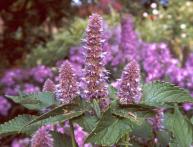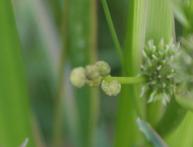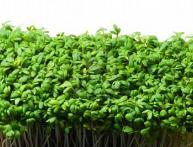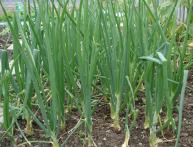Features of the meadow foxtail culture, plant care
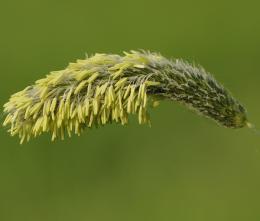
Meadow foxtail is a perennial herbaceous plant, with a height of 50 to 110 cm. The leaves have a flat shape, with a sharp-rough structure. This plant has such advantages as: winter hardiness, frost resistance, high nutritional value and resistance to waterlogging. Foxtail is often used as a precursor for grain and vegetable crops.
The plant has a fibrous rhizome that penetrates into the ground to a depth of one meter. The leaves are about 25 cm long and have a slightly bluish color. Meadow foxtail became known back in the 18th century. Today, five breeding varieties are zoned. The seeds of the plant are filmy and non-flowing. The weight of 1000 seeds fluctuates within 600g.
Content:
- Main features of culture
- Beneficial features
- Application of meadow foxtail
- Planting and care
- Harvesting seeds
Main features of culture
After sowing the crop, at first it grows very slowly. The first shoots begin to appear only on the 12th day after sowing. In the first year, a small number of fruiting shoots appear. Already in the second year, the foxtail begins to actively grow and develop. With the onset of June, the cereals begin to bloom. In this type of cereal crop, the characteristics of both spring and winter development. In other words, we can say that meadow foxtail is a semi-winter type of crop.
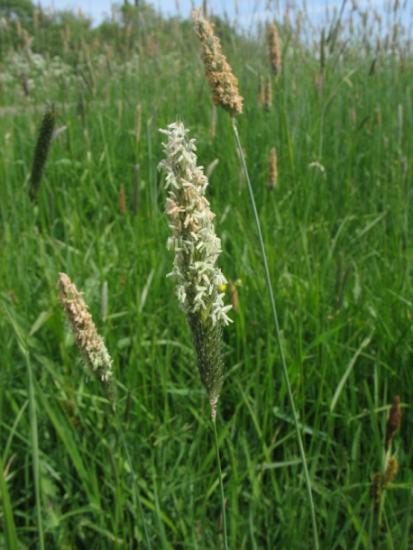
The grains of the plant can be stored for more than ten years, and the seeds for about four.The flowering period of the plant is slightly extended. This is due to the non-simultaneous maturation of shoots. Since foxtail is a moisture-loving plant, it is best sown in clay meadows and low-lying peat bogs. It can also be grown in acidic soils. Due to the high winter hardiness of the crop, it is sown even in forest-tundra areas.
Beneficial features
Despite the fact that foxtail is not considered a pharmacopoeial plant, it still has its uses in folk medicine. First of all, this plant is an analgesic, expectorant and tonic for the treatment of colds. Foxtail also helps well with arthritis, radiculitis and diseases of the excretory system.
This plant is also used in traditional medicine, when taking allergy tests and treating bronchial asthma.
Foxtail has a positive effect on the nervous system. The plant is not recommended for use in treatment by those people whose body may exhibit an allergic reaction. After all, the pollen of this crop can cause a disease such as hay fever.
Application of meadow foxtail
This plant is grown as a fodder crop. In addition, foxtail is used in arranging lawns. Also, the decorative forms of this plant are often used in the arrangement of rockeries and naturgardens.
In medicine, meadow foxtail, or rather its pollen, is used in the preparation of allergens. You can also prepare healing decoctions from this plant, which can have a general strengthening effect. Dried flowers are used by florists to decorate decorative bouquets and compositions.
Planting and care
To sow this crop, it is better to use freshly drained soil. Before sowing, you need to carry out some preparatory work in the form of treating the soil with herbicides. Two weeks after spraying, the soil needs to be plowed. If the plant is grown for seeds, it is better to sow it in even rows. Sowing can be either cover or coverless. In the fall, the seed plants can be sown under winter rye, or under some annual grasses.
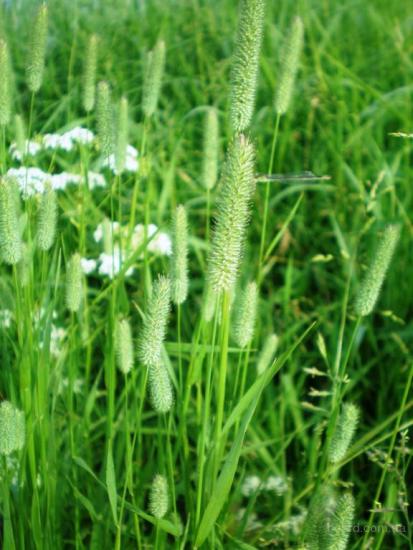
In order for the planted grass to be dense, the number of plants per square meter should be 350 pieces. Caring for meadow foxtail crops involves watering, fertilizing and cultivating. The plant should be fertilized before its growing season begins. In this case, mineral fertilizers are applied in the amount of: 3 centners of superphosphate and 1 centner of potassium fertilizers per 1 hectare of crops. The crops are also fertilized with nitrogen fertilizers in the form of ammonium nitrate (1 centner per 1 ha).
Harvesting seeds
Seeds meadow foxtail ripens at the end of June. Harvesting should be done when the plant is in the waxy ripeness phase. This can be determined by the color of the plant, when the overall appearance of the nil reaches a greenish tint. Also on individual stems, the seeds begin to fall off a little. The seeds have a soft, cutting consistency. The ripe harvest is harvested by direct harvesting.
At the same time, it is necessary to take into account the nuance that it is necessary to harvest plants only from the second year of fruiting. If foxtail sowing is used for hay, then two cuttings are carried out per season, and if for grass meal, then three. The number of cleanings depends on the ability and length of regrowth of the mowed plant. If the height of the cut plant is at least five centimeters, then regrowth will be rapid.
After harvesting, some modifications should be made to it.A heap of plants is sent for rough cleaning. This cleaning is carried out to sort large and small impurities. If the heap is wet, it must be dried by ventilation. After this, primary and main cleaning is carried out.
Video about a beautiful plant - meadow foxtail:

